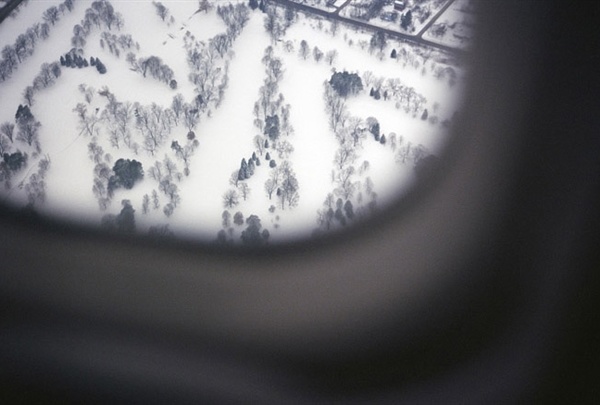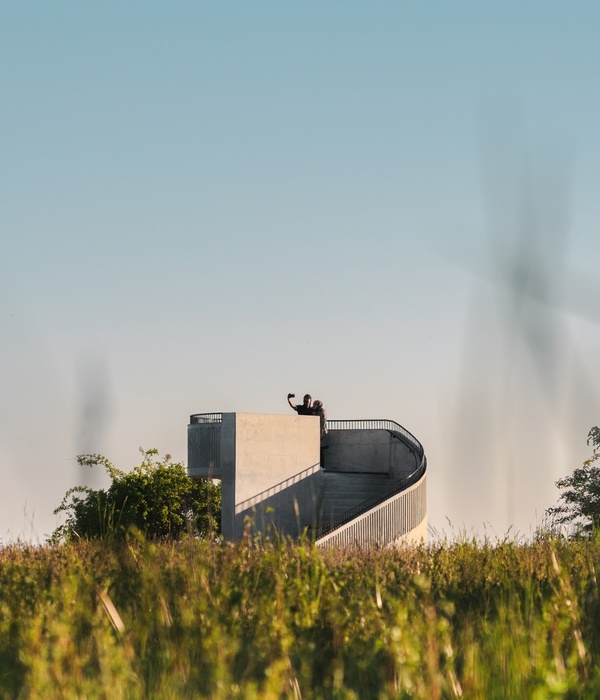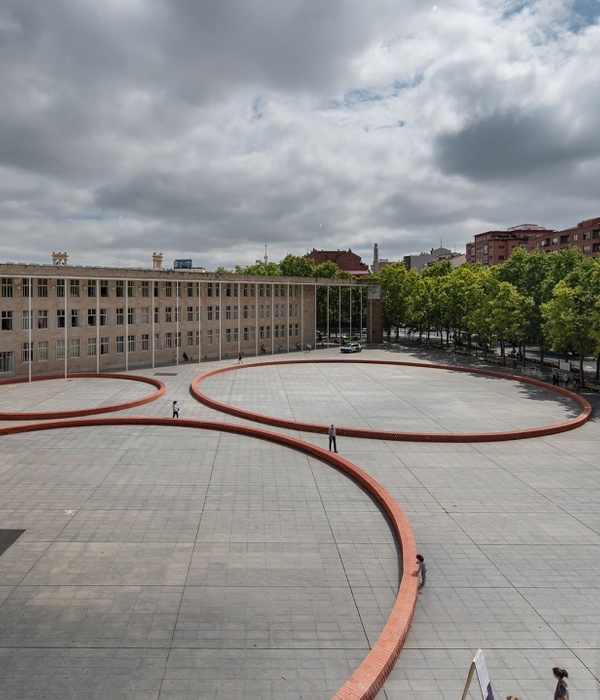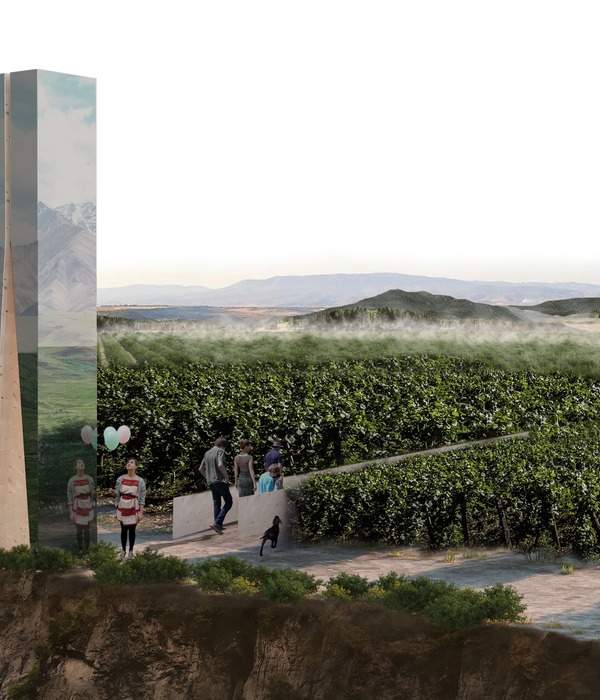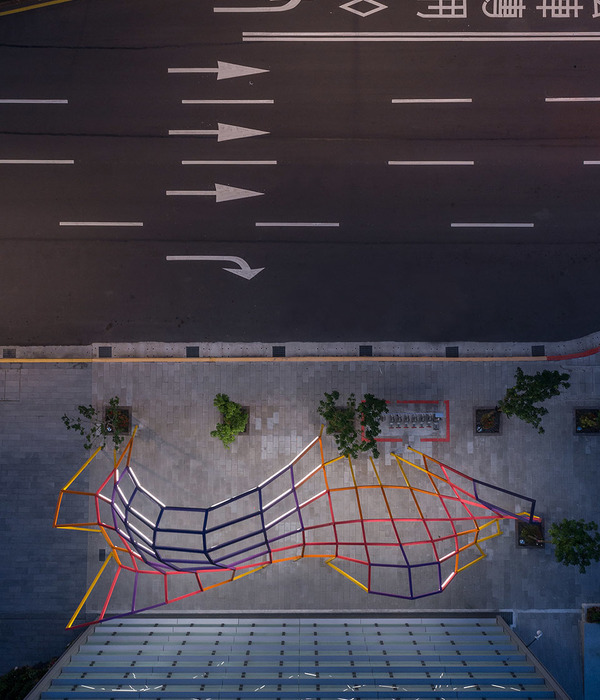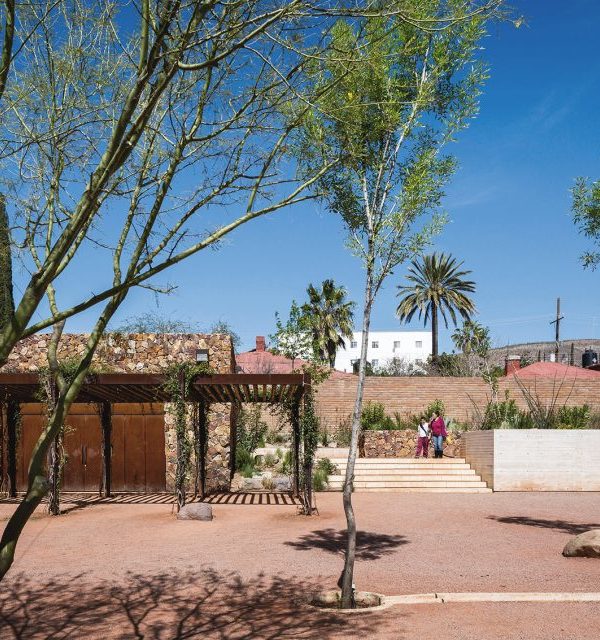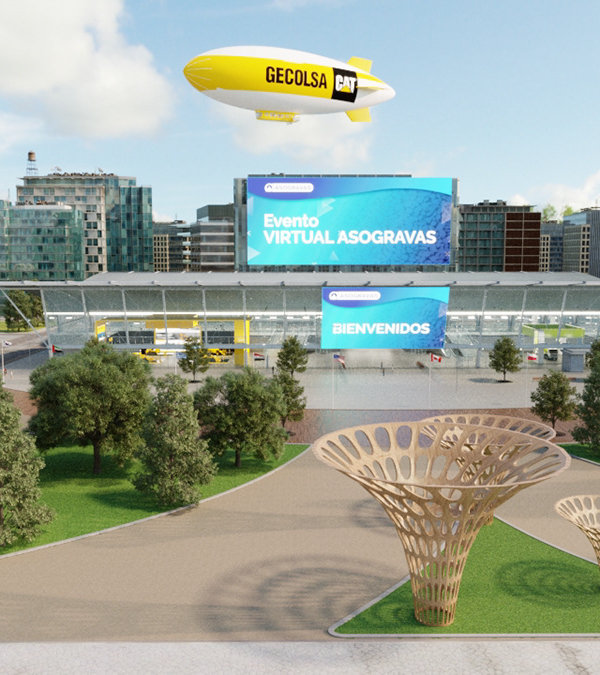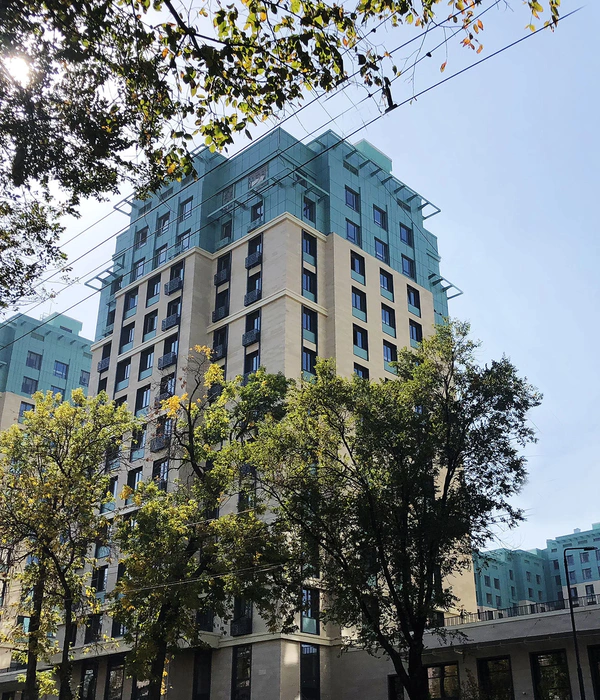“这一创新的研究项目利用社交媒体数据研究了西雅图市中心公园内的公众态度和行为。通过挖掘来自超过2000人发布的Instagram帖子,研究团队为社交网络时代创造了一种新的用后评价体系。该首创的分析方法让景观设计师和城市官员能够了解到公园真正的使用状况以及游客对于具体设计元素的共鸣程度和反应方式,从而对公共空间的设计产生新的见解。这一研究方法使设计师得以从真正意义上站在公众的视角去回应他们的设计。” – 2019年评审委员会
“This innovative research project uses social media data to study public attitudes and behaviors in a park in downtown Seattle. By mining publicly available Instagram posts from more than 2,000 people, the research team has created a new kind of post-occupancy evaluation for the social-media age. This inventive analytical method allows landscape architects and city officials to gain insights into public-space design by shining light on the ways a park is actually used, the degree to which it resonates with visitors’ emotions, and how users respond to specific design elements. This approach to research gives designers a new way to gauge reactions to their work, literally through the eyes of the public they serve.” – 2019 Awards Jury
社交媒体是建筑环境研究中的一个迅速发展的领域,它能够帮助了解公众的观点和空间的使用状况。为了将这些数量庞大、高效且持续增长的数据集合与景观实践结合起来,该项目首次利用社交媒体数据对场地尺度的景观问题进行了研究。以西雅图的高速公路公园为例,项目团队对2035位用户于三年间(2015-2017)在Instagram发布的3314篇帖子进行了挖掘和分类,以回答以下三个研究问题:1)公园作为公共空间是如何被利用的?2)使用者与公园的建筑环境有着怎样的情感连接?3)应当如何利用社交媒体数据来理解场地尺度的景观设计问题?项目从设计特征、宣传以及气候三个方面探讨了公园利用与设计策略之间的联系,最终为公共空间的设计带来了新的观点和视角。团队还开发了一款解析程序,能够分析并揭示场地尺度下的大众数据,从而为景观设计和管理以及与学科相关的知识扩展提供价值。
Social media is a fast-growing area in built environment studies to understand public opinions and space usage. To bridge the use of these huge, efficient, and ever-growing data sets to landscape practice, this research marks a pilot effort to study site scale landscape issues using social media data. Taking the Seattle Freeway Park as an example, 3314 Instagram posts from 2035 users over three years (2015-2017) were mined and categorized to answer three research questions: 1) how is the Park used as a public space? 2) what are the users’ emotional ties to the built environment of the Park? and 3) how should social media data be used to understand site-scale landscape architecture design issues? The results brought new perspectives and insights about public space design by discussing the associations between park usage and design strategies in lights of design features, publicity, and climate. An analytic procedure for analyzing and interpreting site-scale crowdsourcing data was developed, which is valuable to landscape design and management, as well as the knowledge expansion of this discipline.
▲利用社交媒体理解景观设计:该项目将Instagram数据作为主要的数据来源,以研究场地尺度下的景观使用状况和感知状况。Using Social Media to Understand Landscape Design. This project uses Instagram data as the major data source to explore usage and perception of site-scale designed landscape.
不同于近期的研究项目大多数集中在区域性的主题上,该项目首次利用了社交媒体数据对场地尺度的景观问题进行了研究。西雅图的高速公路公园被选为试点场地,其原因在于它是一个经典的大小合适(5英亩)且功能简单的景观设计历史案例。此外,公园的空间质量在近日受到了当地使用者的质疑,他们建议拆除公园,原因是他们认为其设计并不能鼓励户外活动,相反还会“激发恐慌和助长犯罪。”(Mudede,2002)
该项目对三个问题进行了探讨:1)西雅图高速公路公园作为公共空间是如何被利用的?2)使用者与公园的建筑环境有着怎样的情感连接?在回答这两个理论性问题的同时,项目又提出了一个方法论的问题:3)应当如何利用社交媒体数据来理解场地尺度的景观设计问题?
在对大量源于公众的数据进行比较之后,研究者认为Instagram的数据能够最好地反映公共景观的使用状况,因为它包含了自主发布的照片、标签、时间点以及地理位置等信息。自2010年上线以来,Instagram已经成为专注于照片分享和社交的主要线上移动应用程序。截至2018年3月,Instagram已拥有8.31亿活跃用户(Statista, 2018),并且尤其受到年轻一代的欢迎。据报告显示,在18岁至29岁的人群中有59%是Instagram的用户(York, 2017)。
以西雅图高速公路公园为研究案例,项目团队对2035位用户于三年间(2015-2017)在Instagram发布的3314篇帖子进行了挖掘和分类。这一举措面临着来自社交媒体研究中存在的伦理问题,例如数据保密、知情同意以及匿名等等。研究者基于IRB方针采取了三项措施,以尽可能地减少对于Instagram用户的潜在伤害:1)研究仅采纳了被设置为公众可见的贴子;2)所有数据均是在汇总的层面上进行分析,不会指向任何个体用户,且不会以任何方式将个人照片或标签作为研究成果展示出来;3)通过定义具体的时间范围和位置标签,最大程度地减少了不必要的信息采集。
团队开发了一种将对公园的使用和认知和Instagram的照片和标签内容联系起来的分类方法。研究者将3414张照片分标为三个主题,包括(1)活动,(2)物品/场景以及(3)头部特写。2787个标签则被标记为(1)活动,(2)物品/场景以及(3)体验。每个主题还进行了更细致的标记以更好地分类。研究实施了4项单独的分析来回答问题,例如:(1)月使用率分析,(2)每月类别分布,(3)标签类别的连接,以及(4)照片视场测绘。分析结果展示了人们对于公园的使用状况和感知状况,并通过图表实现了更高的连续性和准确性。通过从设计特征、宣传以及气候等方面讨论公园使用之间的联系,分析结果为公共空间的设计带来了新的视角。
分析的重要发现包括:(1)混凝土迷宫是西雅图高速公路公园最具标志性的设计特征,它唤醒了人们强烈的“发现感”,同时也体现了一种内向的感知。(2)Instagram的数据显示,公园内常常举办角色扮演活动,但缺乏集体性的活动。这一现象同样也可以追溯到公园内向的空间特征,例如分段式的空间,凹进的路径,以及中央开放区域的缺失。(3)春季和秋季是公园最受欢迎的两个季节,在夏季,与自然元素有关的发帖量要少于春季和秋季。这说明人们对植物的季节变化特征(如颜色、纹理、气味和生命力等)有着明显的偏好。(4)因此,在未来设计公园时,设计师应当谨慎选用粗糙的材料,避免过多的内向空间,同时注意开放空间的正确分布比例。
研究还开发了一个新的分析程序,可以利用来源于大众的数据对场地尺度的景观项目进行研究,通过数据挖掘和清理、编号以及分类来帮助分析和阐释。对于学术研究者来说,该方法与传统的研究方法相比不仅拥有更庞大的数据和参与者,而且更加节约资金和时间。利用这些数量庞大、高效且持续扩充的数据集,目前关于景观设计的知识必将向更加丰富和精确的方向发展。这一分析程序还可以与工具箱相结合,以便景观设计师、公园管理者、城市规划师、城市地理学家以及城市管理者等专业人员对公共空间的使用进行了解和监测。对于景观设计师而言,这种新的研究方式不仅能够以更宏观、更系统的方式展示公园的使用和感知状况,还有助于其坚持或否定设计主张、评估当下的景观方案以及重新制定设计方针。
研究团队还注意到,大多数社交媒体的用户均来自年轻一代。因此,其他年龄的人群,尤其是儿童和老年人,在该数据集中的比例较小。另外,比起反映日常的使用模式,社交媒体用户更倾向于发布有吸引力的内容。未来的研究应当对多个公园进行跨区域的比较研究,并通过其与外部数据的比较来对社交媒体数据进行更深一层的验证。
▲社交媒体和Instagram数据:社交媒体提供了数量庞大,高效且持续扩充的数据,研究者可以利用这些数据更好地了解景观设计。Social Media and Instagram Data. Social media supplies of huge, efficient, and ever-growing data which can be taken advantage of by researchers to better understand landscape design.
▲西雅图高速公路公园是西雅图市中心的公共空间,占地5.2英亩。这一著名的项目由Lawrence Halprin Associates的Lawrence Halprin和Angela Danadjieva设计,于1976年向公众开放。公园的面积十分符合典型的“场地尺度”的景观项目,且拥有简单的功能布局。Seattle Freeway Park. Seattle Freeway Park is a 5.2-acre public space in downtown Seattle. This famous project was designed by Lawrence Halprin and Angela Danadjieva from the Lawrence Halprin Associates and opened to the public in 1976. This park has the suitable size (5 acres) of a typical ‘site-scale’ designed landscape with simple programs.
▲作为主要数据集的照片和标签:左边的“图像马赛克”显示,不同的照片被从景观使用状况和认知状况两个方面进行解读。在右边的“标签云”中,标签的大小表明了其在Instagram用户中的普及程度。Photos and Hashtags as Two Major Datasets. As shown in the Image Mosaic (left), different photos are read in terms of landscape usage and perception. In the Word Cloud of Hashtags (right), the size of the hashtags in this graphic indicates its popularity among Instagram users.
▲研究过程:数据收集和分析流程图展示了从数据挖掘到数据分类再到多重分析的过程。Research Process. This Data Collection and Analysis Flow Chart shows the process from data mining, to categorization, and multiple analysis.
▲照片分类:项目团队将3414张照片标记为三个主题,包括活动、物体/场景和头部特写。每个主题包含了数个类别,例如活动照片被细分为角色扮演和创造性活动、音乐活动和派对、体育活动以及人像摄影等。Categorization of Photos. We coded all 3414 photos into three major themes, including activities, objects/scenes, and headshots. Each theme include several categories. For example, activities images were further put into categories such as cosplay and imaginative activities, music and party, physical activities, and taking portrait photos.
▲标签分类:2787个标签被分为三个主题,包括活动,物体/场景和体验。例如,活动主题包含了描述公园中发生的人类活动的标签,它们被标记为角色扮演和创造性活动、音乐活动和派对、体育活动以及人像等子分类。Categorization of Hashtags. A total of 2787 hashtags were grouped into three themes including activities, objects/scenes, and experiences. For example, the theme of activities includes hashtags that depict human activities taking place in the park, which are coded into sub-categories of cosplay and imaginative activities, music and party, physical activities, and portrait.
▲照片和标签的每月分布:两张示意图显示了公园全年的活跃程度。Monthly Distribution of Photos and Hashtags. The two diagrams present how active the park was throughout the year.
▲每月的场景、活动和感受模式:根据使用者在Instagram发布的照片和标签汇总,六张图表展示了公园场景、活动和感受模式在每月的变化。Monthly Patterns of Scenes, Activities and Feelings. Summarized from Instagram photos and hashtags, the six diagrams present the monthly patterns of scenes, activities and feelings reported by Instagram users about the Park.
▲照片和标签的分类频率:从Instagram数据总结出的六张图表详细地展示了公园中能够引起人们注意的场景和物体、公园中发生的活动以及人与公园的情感连接。Categorical Frequencies of Photos and Hashtags. Summarized from Instagram data, the six diagrams present detailed categories of the scenes and objects captured people’s attention, the activities occurred in the park, and people’s emotional ties to the park.
▲标签类别的连接:标签类别连接图表展示了使用者与公园、活动和功能空间之间的情感连接。Linkages of Hashtag Categories. The Linkages of Hashtag Categories diagram shows the relationships of the Park users’ emotional ties to the park, the activities, and the designed programs.
▲照片视场(PFV)测绘:设计团队绘制了扇形和多边形图以描述每张照片中的站立位置以及平面图视角下包含的场景范围,并绘制了囊括全部926张照片的视场描绘的地图。Photo Field of View (PFV) Delineation. We drew the fan-shaped polygons to delineate the standing location of each photo and the range of included scenes in a plan view. A map of the PFVs of all 926 photos is created.
▲照片视场(PFV)测绘:PFV测绘图显示了公园中被观测的区域在不同季节和全年的受欢迎程度。Photo Field of View (PFV) Mapping. The PFV Mapping show the popularity of observed areas of the Park in different seasons and throughout the year.
▲发现:通过讨论公园的使用与设计策略在设计特征、宣传和气候方面的联系,分析结果为公共空间的设计带来了新的视角。Findings: These results bring new perspectives and insights about public space design by discussing the associations between park usage and design strategies in terms of design features, publicity, and climate.
▲结论与展望:项目团队开发了一款分析程序,用于分析和解释场地尺度下的大众数据,从而为景观设计和管理以及与学科相关的知识扩展提供价值。Conclusions and Prospects. An analytic procedure for analyzing and interpreting site-scale crowdsourcing data was developed, which is valuable to landscape design and management, as well as the knowledge expansion of this discipline.
The last decade underwent a boom in social media that enabled various people to share information and opinions by publicly posting textual data (words, tags, and comments) or non-textual data (pictures, videos or audio) online. These huge, efficient, and ever-growing data sets have been employed by researchers to better understand the environment and society. Since social media data are self-posted and crowdsourced, they are rich and complex in nature. Stories, facts, opinions, emotions, and moments are communicated and recorded, along with geo-locations, timestamp, and account information to the public.
As most recent research projects have focused on regional topics, this project marks a pilot effort to study site-scale landscape architecture design issues using social media data. Seattle Freeway Park was selected as a sample site because this classical example of landscape architecture history has a suitable size (5 acres) with simple programs. In addition, the spatial quality of the park was recently questioned by local users, who proposed to demolish the park as they believed that the design didn’t promote outdoor activities but instead “inspired fear and facilitated crime” (Mudede, 2002).
This project evaluated three questions: 1) how is Seattle Freeway Park used as a public space? 2) what are the users’ emotional or affective ties to the built environment of Seattle Freeway Park? While answering the two theoretical questions above, a methodological question was also addressed, that is: 3) how should social media data be used to understand site-scale landscape architecture design issues?
After comparing numerous crowd-sourcing data, the researchers decided that Instagram data best reflects the use of public landscapes, with information such as self-posted images, hashtags, time information, and geographic tag information. Since it was launched in 2010, Instagram has become the dominant online mobile application that focuses on sharing photographs and social networking. As of March 2018, Instagram has 813 million active users (Statista, 2018). It is especially popular among younger generations, as 59% of 18 to 29-year-olds in the United States are reported to use Instagram (York, 2017).
Taking the Seattle Freeway Park as an example, 3414 Instagram posts from 2035 users for three years (2015-2017) were mined and cleaned. We acknowledged the challenges of ethical issues in social media research such as data confidentiality, informed consent, and anonymity. The researchers consulted IRB guidelines and took three measures to minimize the potential harm to Instagram users: 1) This study only used the posts that the users set as public for the audience. 2) All data were analyzed at an aggregate level without drawing attention to individual users. And, neither individual pictures nor hashtags were presented as part of research products. 3) Unnecessary data collection was minimized by defining specific timeframes and location-tags.
By developing a categorization method that bridged park usage and perceptions with contents of Instagram photos and hashtags, the researchers coded the 3414 photos into three themes, including (1) activities, (2) objects/scenes, and (3) headshots. The 2787 hashtags were coded into three themes including (1) activities, (2) objects/scenes, and (3) experiences. Each theme was further coded into finer categories. The study conducted four separate analyses to answer the research questions, such as: (1) monthly frequency analysis, (2) monthly category distribution, (3) linkage of hashtag categories, and (4) photo field of view (PFV) delineation. The results presented people’s usage and perceptions of the park with greater continuality and precision, as showed in the charts and diagrams. These results bring new perspectives and insights about public space design by discussing the associations between park usage in terms of design features, publicity, and climate. Important findings include the following. (1) The concrete maze was the foremost recognized design feature in the Seattle Highway Park, which invoked a strong sense of “discovery” and also suggests negative perception issues. (2)The Instagram data showed that the park was popular for cosplay activities, but lacked group activities. This phenomena could also be traced to the park’s introverted space characters, such as segmented pieces of space, dent-patterned paths, and lack of a central open area. (3) Spring and fall were the two most popular seasons in the park, and posts about natural elements in summer were less common than those in spring and fall. This suggested a significant preference for the seasonal changes of vegetation such as color, texture, scents, or vitality. (4) Hence, when designing a park in the future, designers should be cautious when using rough materials, mindful of too many introverted spaces, and give attention to the right scale for open space programs.
This research developed a new analytic procedure to use crowd-sourced data to research a site-scale landscape project using data mining and cleaning, coding and categorization, for analysis and interpretation. For academic researchers, this method, compared to conventional research methods such as survey and on-site observations, not only has a large amount of data and participants included in the analysis, but it is also financially economic and less time-consuming. Taking advantage of these huge, efficient, and ever-growing data sets, the current knowledge about landscape architecture is bound to grow with higher richness and complexity. This method can also be added to the toolkit for understanding and monitoring the use of public spaces for professionals, such as landscape architects, park managers, urban planners, urban geographers, city managers, and others. For landscape architects, this new method not only presents the usage and perceptions of the park in a larger and more systematic manner, but also assists in confirming or disapproving design claims, evaluating current landscape programs, and rewriting design guidelines.
We notice that most social media users consist of those in the younger generations. Therefore, other age groups, especially minorities, such as children, the elderly, etc., are less represented in this dataset. Also, social media users tend to post more attractive content rather than content reflecting daily usage patterns. Future research should include conducting cross-region comparison studies on multiple parks and further validating social media data by comparing them with the external data.
{{item.text_origin}}


